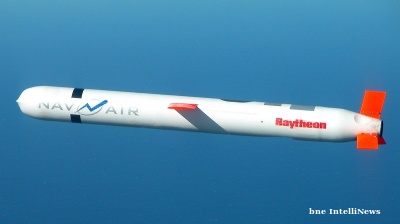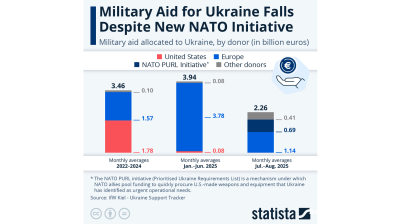Ukraine has received its first batch of fourth-generation US-made F-16 fighter jets, after more than two years of delays, but the high tech planes will make almost no difference to the war in Ukraine as they are too few, too late.
The delivery marks a significant milestone a year after the "fighter jet coalition," led by Denmark and the Netherlands, was formed at the Vilnius Nato summit to supply Ukraine with the badly needed fighter jets.
The transfer was reportedly completed by the end of July, although the exact number of jets remains undisclosed.
Ukraine has been at a serious disadvantage in air power since the first days of the war. After Russian forces crossed the border into Ukraine on February 28, 2022, Ukrainian President Volodymyr Zelenskiy immediately took to the airwaves and called on Nato to “close the skies” to the Russian air force.
“Ukraine needs military equipment – without restrictions,” Zelenskiy said in a video address in March 2022. “Ukraine asked for your planes. So we don’t lose so many people. And you have thousands of fighter jets. But we haven’t been given any yet.”
But when the aid was not forthcoming by May Zelenskiy became more stringent and lashed out at Nato for ignoring Ukraine’s plight and leaving it effectively defenceless against Russia’s forces.
“We believe that Nato countries themselves have created the narrative that the closure of the sky over Ukraine would provoke Russia’s direct aggression against Nato. This is self-hypnosis,” Zelenskiy said in another video address in May 2022. “Of those who are weak, underconfident… all the people who will die starting from this day will also die because of you. Because of your weakness. Because of your disunity.”
Despite these desperate pleas it has taken Nato more than two years to deliver a mere handful of jets and somewhere between 150,000 and 300,000, according to varying estimates, Ukrainian soldiers and civilians have died in the meantime.
80 jets – eventually
The F-16 coalition has committed to supplying Ukraine with at least 79 planes from the Netherlands, Denmark, Belgium and Norway, but over the coming years. The Ukraine need for effective aircover is desperate and current.
After the US ran out of money for Ukraine in January, Ukraine’s air defences collapsed. Russia intensified its missile barrage in January to take advantage of Ukraine’s lack of anti-missile cover. Then Russian forces took the initiative following the fall of Avdiivka on February 17 and intensified its barrage again in March, taking almost total control of the air in the process. By the end of the summer, 90% of Ukraine’s non-nuclear power generation installed capacity has been destroyed – about half of the total installed capacity.
In the meantime, a total of six pilots have reportedly recently completed their training to fly the F-16s in a programme that was plagued with language barriers and technical difficulties, according to the Washington Post. The US is reportedly deliberately dragging its heels in training pilots to fly the desperately needed F-16 and permission is also being withheld to use Western weapons to strike targets inside Russia proper.
These policy decisions come as Russia has innovated and started using FAB glide bombs – Soviet-era 3-tonne gravity bombs that have had wings strapped to their backs and been launched from Russian jet fighters to devastating effect. Russia is currently launching some 800 of these heavy bombs against Ukraine, whose only defence is to shoot down the jets that launch them. The size of the bombs mean what defences Ukraine has belatedly built are powerless against the glide bombs, but as they only have a 50-km range their use has been limited to the front line, and the city of Kharkiv in particular.
Even with the arrival of the F-16s in Ukraine, their deployment in combat remains uncertain. Press reports say that trained Ukrainian pilots may need additional time to become fully operational.
Ukrainian and Western officials caution that the F-16s, once hailed by Kyiv as a game-changer, are unlikely to make an immediate impact on the battlefield. They cannot fly close to the front line, where Russian forces are equipped with surface-to-air missiles. Moreover, they would go up against the 350-plane strong Russian air force flying SU-34 fifth generation Sukhoi jets, some of the most advanced fighter jets in the world.
The primary role of F-16s jets, at least initially, will be limited to defensive operations, focusing on intercepting incoming Russian missiles targeting cities and energy infrastructure far from the front line. The glide bomb threat will not be addressed at all. Engaging in offensive operations against Russian ground forces on the front line is not an option.
President Volodymyr Zelenskiy has been clearly frustrated by the lack of air support provided by Nato from day one. He has called for a minimum of 120 F-16s and voiced concerns over the number of jets received, calling it "insufficient."
He said that while the decision to provide F-16s is strategic, the quantity does not yet meet the strategic needs of Ukraine. "The decision on the F-16 is strategic," Zelenskiy said. "The number is not yet strategic."
The story was similar in the provision of the powerful German-made Leopard tanks – another potential game-changer on the battlefield. However, with the Leopard too, Ukraine’s Western allies were reluctant to deliver the weapon for fear of provoking an escalation and a direct conflict between Russia and Nato forces. In the end rather than sending 300, the West has sent a total of 58 Leopard tanks, according to reports, far too few to make a difference on the battlefield. Moreover, the effectiveness of the Leopard tanks was greatly reduced by the lack of air cover, a pairing that is standard practice in Nato’s military playbook.
The first full squadron of F-16s, comprising approximately 20 jets, is expected to arrive by the end of 2024. However, logistical challenges, including training capacity and the need for extensive ground support, may delay their effective use.
There are additional problems with the F-16s that need to be addressed. One of the biggest headaches is the enormous amount of maintenance they need that will have to be provided by US military personnel. Second is the sensitivity of the planes to the state of the runways. Ukraine’s air force is made up of Soviet-built MiGs, a robust plane that can operate on imperfect runways and needs less maintenance. However, damaged runways are a much bigger problem for the more sophisticated F-16s, making bombing runways a much more obvious target.
Another problem with so few F-16s is where they will be stored. Russia has developed long-distance highly accurate guided missiles that can in theory target the F-16s while they are on the ground, a major vulnerability that also carries high propaganda value if the planes can be destroyed in their home bases.
Although a PR coup for Zelenskiy, experts have long expressed scepticism about the F-16’s ability to significantly alter the dynamics of the conflict. Amongst Russia’s arsenal is the S-400 surface-to-air defence system that can take an F-16 out, widely considered a state-of-the-art defence system that both Turkey and India have bought to protect their borders. And Russia is in the process of rolling out the next generation S-500 system.
The best that analysts say the F-16 can bring to the party is a boost to morale amongst Ukraine’s forces at the front line, but they will not be able to deliver any material advantage.
To add to the irony, the US is not providing any F-16s from its own stockpile and has left it to its European partners to send planes. Many of those partners said they would only release F-16s to Ukraine after they have received delivery of the US new F-34 fifth-generation fighters. However, that caveat has added extra delays, as the US F-34 development programme has been bedevilled by problems and delays, which will lead to further delays in the delivery of jets to Kyiv. The total of 80 jets promised to Ukraine is unlikely to be in Ukraine before 2026 – if then.
What the US has promised to provide, in a face-saving measure, is missiles for the European F-16s, including AGM-88 HARM air-to-ground missiles and AMRAAM medium-range air-to-air missiles. However, even this promise came with a caveat: the availability of these munitions remains constrained by production capacities, the US press reports
News

Mongolia’s PM ousted as party infighting topples government
Right to challenge sacking means battle may not be over. Observer says confrontation is linked to desire for control of country’s vast coal resources.

Ex-chairman of Istanbul-listed Sisecam hit with travel ban in Can Holding investigation
Company is controlled by "Ataturk" bank Isbank, which has previously been in the crosshairs of Turkish president Erdogan.

Ghana’s dormant TOR refinery to restart crude operations by October-end
Ghana has long struggled to translate its crude output into refined fuel security. Successive governments have pledged to revive TOR, which has faced years of debt, mismanagement, and technical breakdowns.

No Tomahawks for Ukraine, Trump to meet Putin in Hungary
The US cannot deplete its own stockpile of Tomahawk cruise missiles by supplying them to Ukraine, President Donald Trump said at a press conference on October 16 following a phone conversation with Russian President Vladimir Putin.



